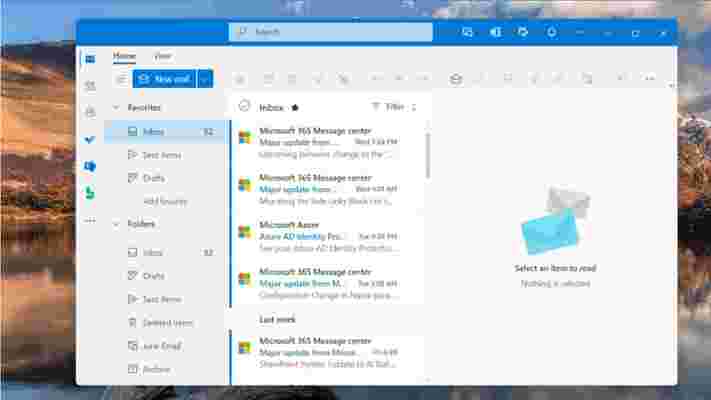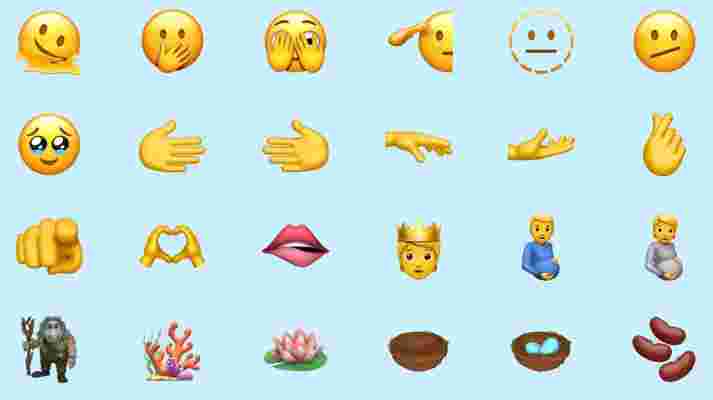Apple's Studio Display is overkill for photo editing, but I still really want one
The spiritual successor to Apple's Cinema Displays is here – and while I certainly don't need the new Apple Studio Display's bells and whistles, which ring out in glorious spatial audio, that doesn't mean I'm not speccing one up in another browser window right now.
The 27-inch 5K Retina display is everything my MacBook Pro craves, and everything my bank balance fears. Not that the Studio Display is overpriced – in fact, for digital creatives, you could argue that there's nothing else out there quite like it for its base price of $1,599 / £1,499 / AU$2,499.
But the monitor does also cram in a lot of features that I don't really need, or that duplicate the perfectly good accessories I already own. Apple has effectively built my iPhone 11 Pro into a display, which makes a slight mockery of global chip shortages and gives the Studio Display some rather nifty and, possibly quite superfluous, smarts.

My LG 27UK850-W 4K monitor, which I bought for £485 (around $635 / AU$875) three years ago, does not have the Studio Display's six-speaker sound system with spatial audio, a three-mic array, 12MP ultrawide camera or 5K resolution.
But when it comes to potential for photo and video editing, it also isn't miles off its Apple rival. Both panels offer 10-bit color depth and the handy ability to charge your laptop via USB-C. It isn't like the Studio Display is mini-LED, like the Pro Display XDR, or offers 120Hz variable refresh rates (you instead get 60Hz).
Like most Apple products, though, the Studio Display isn't all about the practicalities – it's about wrapping up marginal gains in shiny aluminum and convincing me that it's the final missing piece in my home setup. With the Studio Display on my desk, I'd no longer need the clutter of external speakers, a webcam or an external microphone – Apple's finally built good-quality ones into the display itself.

If you like the sound of that, and need a monitor for creative work rather than gaming, then the Studio Display seemingly offers good value for Mac users. OK, the panel itself is hardly a big leap from an LG UltraFine 5K or an iMac display, and it has a slightly underwhelming (for the price) 600-nit brightness. But its slim, aluminum charm and promise of desktop minimalism, plus a pretty great 12MP webcam, mean that $1,599 / £1,499 / AU$2,499 is also pretty competitive.
As always with Apple, there are some stingers in the checkout process. Want the luxury of a height-adjustable stand? That'll be an extra $400 / £400 / AU$600. This has echoes of Apple's $400 Mac Pro wheels . And then there's the FOMO of going without the Nano-Texture glass for reducing glare (another $300 / £250 / AU$500). Tick both of those boxes and you're looking at a monitor that costs the same as a fully-specced, 27-inch iMac with a 5K Retina display (which you can no longer buy).

Still, aside from pros who need a super-bright display for HDR video editing and color grading, the Studio Display slots in nicely below Apple's ludicrously high-end Pro Display XDR. There is simply no other monitor with this combination of display specs, design and features, and the Apple tax (this time) actually isn't too painful.
As someone who does more photo editing than video editing, I can't quite justify upgrading to what is essentially a giant iPad with a 448 pixel-per-inch density and P3 color gamut coverage. Not least because it might ruthlessly expose when my snaps aren't pin-sharp. But does that mean I won't ultimately buy a Studio Display? If it performs as well in person as it looks on paper, then it might be hard to resist –particularly given it's the one screen I spend more time looking at than my phone.
Microsoft's One Outlook has leaked, but people already think it sucks
It's been rumored that Microsoft has been developing One Outlook for some time, but a fresh leak suggests we're closer than ever to finally getting our hands on the all-in-one email client. The leak was spotted by Temmie on Telegram and then posted to Twitter by @TomWarren , and looks visually very similar to the current Outlook Web service, with the exception of embedded window controls. For those unaware, One Outlook (previously codenamed 'Project Monarch') will see Windows 11 applications like Outlook, Calendar and Contacts consolidated into a single app that works across PC, Mac and the web in order to replace its existing Outlook clients for desktop including Outlook Web, Outlook (Win32) for Windows, Outlook for Mac and Mail and Calendar on Windows 10. This isn't actually the first time that One Outlook has leaked. A version of the app appeared last year, but wasn't accessible to anyone who worked outside of Microsoft, so this is the first version we've seen that works on work and education accounts.
The new app doesn't appear to be working on personal Outlook accounts yet sadly, though those with access to an education or work account can give the beta version of One Outlook a whirl (clicking this link will download the setup installation file) . Microsoft has yet to announce when One Outlook will be officially rolled out to the public, but this leak does at least indicate that we might not have all that long to wait. Initial speculation projected that the app will be made available to Windows Insiders around April 2022 and then ready for a full release in Q3 later this year, so while no official release date has been provided, it would appear that things are still on track.
Analysis: Microsoft has some convincing to do

A unified system for the Outlook applications certainly makes sense, especially with so many people still using the older Windows 10 operating system, but that doesn't mean that everyone else is happy about it. I've always personally hated using the integrated Mail app because of its clunky design, and I'm certainly not alone, but there's more to an email client than style.
While having everything in one place and with a consistent design could make life easier for those who use Outlook regularly, there are numerous comments on social media right now regarding memory consumption, as well as the service being web-based rather than system integrated which could cause issues for users with slow internet or bad connections.
Windows 11 has also been criticized for its reliance on web apps that cause slow performance and high RAM usage. Unfortunately for those who do rely on the current Mail application on Windows 10 or Windows 11, this might be phased out in the months following a full release of One Outlook, though I hope that a system-integrated option will remain.
It was previously stated by Microsoft that both the classic and new One Outlook apps will be available simultaneously to begin with to give users a chance to manage their switch over, and this certainly suggests that the two might not coexist forever.
With Microsoft relying so heavily on web apps for Windows 11, the OS is making less powerful devices feel like something closer to a bloated Chromebook than a step-up from Windows 10. With any luck, Microsoft remembers to start giving its native apps some love too rather than going all-in on web-based services.
Via Windows Central
Apple confirms iOS 15.4 update will be available for your iPhone in one week
The next update to iOS 15 has been confirmed by Apple and it is scheduled to arrive next week, meaning it might be available to download around March 16.
At the March Event , Apple confirmed the last in the line of the M1 chips, called M1 Ultra, which is available in the new Mac Studio. There's also a new 2022, 3rd-generation iPhone SE 3 , an iPad Air 5 , and a new green color option available for the iPhone 13 and iPhone 13 Pro, available to order on March 11.
Every iPhone that was capable of downloading iOS 15 is also eligible to update to iOS 15.4 and take advantage of its new features.
What's new in iOS 15.4?
The tentpole feature for iOS 15.4 is the ability to use Face ID while wearing a mask. It will ask to scan your face while wearing one so that it can learn to recognize how you look around your mask.
There are also emoji improvements: different hand gestures, a new salute emoji, better gender support and more, all of which you can take advantage of in Mail, iMessage, and other apps on your iOS device.

If you have an Apple Card, you can see its available balance in a new widget. You can also add notes in iCloud keychain. There are other updates as well.
You will be able to download iOS 15.4 by going to Settings > General > Software Update on your iPhone, where you will be able to see it as available to update once it releases next week.